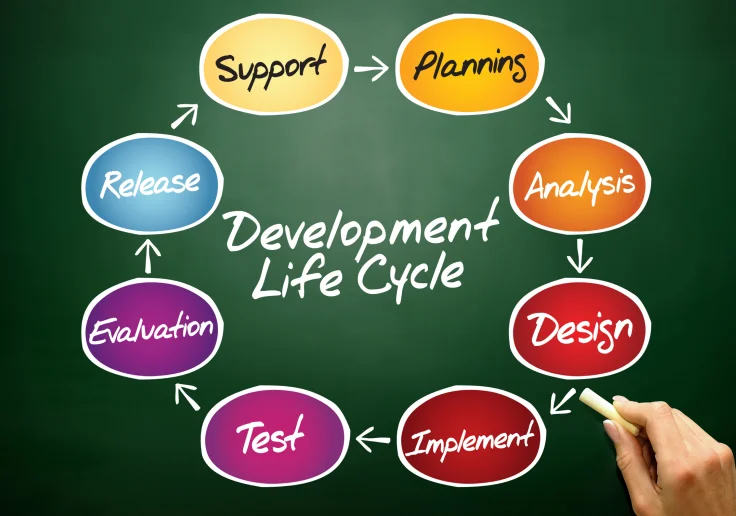Consider performance metrics (or “Critical to Quality” metrics aka CTQs), concepts, design characteristics, process parameters, and production controls. The quality quality function deployment definition aims to understand customers better than they know themselves. Once adopted, QFD shortened design cycles significantly and reduced the total number of employees required in the design process. Shifting the focus from bottom-line cost analysis to customer satisfaction brought innovations and increased sales of domestic vehicles after the surge in popularity of Japanese imports in the 1970s.
By making critical information more accessible, reducing meetings, and consolidating communications, you can make your product design process smoother. Thanks to the structured method of the house of quality matrix, you can align the company’s potential with what the customer wants from your product suite. Once you find specific items customers are requesting, then you can ask the customers how important it is to them to have that item, or you can rank items in order of importance. These items are then listed on the left side of the house of quality matrix, along with a weighted score of importance. This section describes how to deploy a function from source code located in
What is the role of QFD in product development?
Cloud Source Repositories.
- LogRocket simplifies workflows by allowing Engineering, Product, UX, and Design teams to work from the same data as you, eliminating any confusion about what needs to be done.
- These customer requirements, requests, demands, and preferences are framed as specific items and ideally ranked in importance.
- This will be your guiding matrix for determining what your product absolutely must have to appeal to your customers’ needs and wants.
- This information may also be used for creating Work Instructions, Inspection Sheets or as an input to Control Plans.
- Once you find specific items customers are requesting, then you can ask the customers how important it is to them to have that item, or you can rank items in order of importance.
By collecting consumer data and broadly applying it across the product’s development, the various groups and departments involved need to collaborate more closely. Therefore, communication throughout the business is enhanced as conforming to the organization’s strategic objectives is made easier. Development teams rigorously test applications, identify bugs and errors, and deploy patches to ensure seamless functionality.
Cloud Storage function from local source code
The Level 3 QFD is used during the Process Development Phase where we examine which of the processes or process steps have any correlation to meeting the component or part specifications. In the Level 3 QFD matrix, the “Whats” are the component part technical specifications and the “Hows” are the manufacturing processes or process steps involved in producing the part. The matrix highlights which of the processes or process steps have the most impact on meeting the part specifications.
These are then listed on the left-hand side of the House of Quality matrix and represent what customers want the product to do. Technical requirements move to the left side of the house of quality matrix, and a new set of control factors are put on top. The control factors for product development are usually critical parts or product specs. The initial part of the quality function deployment framework involves collecting feedback from the ultimate consumers of the product.
The matrix thus makes it possible to compare and contrast the consumer’s needs with what the business is capable of achieving through its operations. The matrix exposes the best product that the organization can develop for the consumer and allows for the integration of the consumer’s demands and wants throughout the product’s creation process. From here, the technical requirements can be created, with each of them tying back to the Voice of the Customer items identified in the signature Quality Function Deployment matrix, the House of Quality. These Voice of the Customer items will continue to trickle down into other stages of product development and deployment, including component definition, process planning, and quality control. The concept provides a tool for the business for maintaining their focus on the consumer. As a framework or concept, rather than a process, the business can refer back to it at all stages of the product development process.
Process quality control
QFD was first developed in Japan by Yoji Akao in the late 1960s while working for Mitsubishi’s shipyard. In the early 1980s, QFD was introduced in the United States mainly by the big three automotive companies and a few electronics manufacturers. Acceptance and growth of the use of QFD in the US was initially rather slow but has since gained popularity and is currently being used in manufacturing, healthcare and service organizations.

The preferences of the consumer are then placed in a matrix called the House Of Quality. The matrix is also populated with the known capabilities of the organization at each step of the product development process. The matrix then makes it possible to cross-reference the needs of the consumer against that which the business can achieve. By doing this, the matrix reveals the best product the organization is able to create for the consumer and enables the integration of the consumer needs and wants throughout the development of the product.

This is achieved in a number of traditional ways through questionnaires, surveys, market research, etc. The resulting dataset should be large enough that it will offset any deviations or outliers within it, and also make it possible to formulate high-level strategic objectives. An “environment” refers to the specific setting in which a software application runs. Application deployment involves the transfer of applications from the development and testing environments to production environments where they can be accessed by end users. Application deployment transforms complex lines of code into a live application that is accessible to users.
Functional testing involves testing the application’s utility and overall performance. Integration testing is the process of ensuring that various components of the application work together seamlessly. During performance testing, developers test how the application performs under various stressors such as high-traffic or high-load conditions. Quality function deployment (QFD) is a methodology created in response to this problem. It’s focused on providing a clear framework for addressing customer needs, beginning with a matrix called the House of Quality.

0 Comments